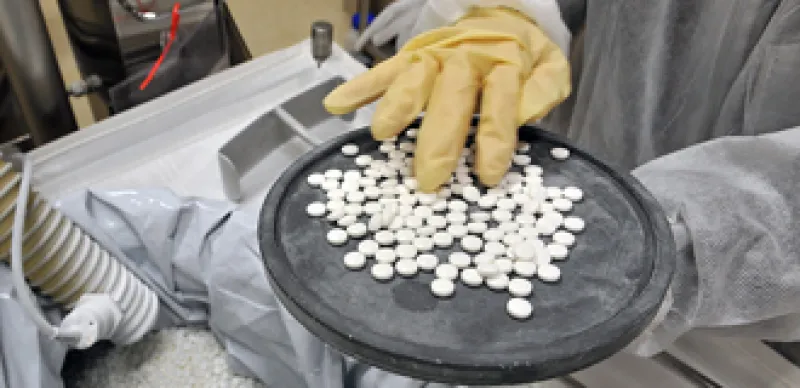What would you do if you operated a French pharmaceutical company that lost patent protection on its key drugs, laid off 2,500 workers by conference call, seen its most hyped cancer drug fail to meet its goals in a Phase III study, and is under investigation by the U.S. Food and Drug Administration for failing to disclose adverse reactions to its drugs? How about buying a biotechnology company for $20.1 billion – a 30-year old company that specializes in rare diseases and whose two major products accounted for less than $1 billion in sales in 2010?
Sanofi Aventis, the French pharmaceutical company did just that. In February, it announced it had reached agreement with Genzyme, a Cambridge, Massachusetts-based company that primarily sells two drugs – Cerezyme, for the treatment of Gaucher disease with a patient population of about 6,000 (average cost $200,000 per year) and Fabrazyme, which treats Fabry’s disease that affects 5,000 to 10,000 people worldwide, also at a cost of up to $200,000 per year.
“Sanofi is chasing an impossible dream. The era of big pharmaceutical companies is over,” says venture capitalist William Gedale, an advisor with NGN Capital, a New York healthcare investor. As blockbuster drugs lose their patent protection, big pharmas simply cannot replicate the revenues of the past, says Gedale. “For investors in the life sciences, the opportunities are in the small and mid-sized companies, where there is still room for growth.”
Big pharmaceutical companies built their business models around blockbuster drugs that generated revenues in the region of $5 billion or more per year. “The industry has changed,’ says Gedale. “Buying companies like Genzyme is a short-term fix, not a long-term solution,” he adds.
Nonetheless, this may be the blueprint for future M&As, analysts say. The Sanofi-Genzyme deal “will usher in several other marquee acquisitions of blue chip biotech companies,” says Steven Burrill of Burrill &Co, a healthcare investment and advisory firm in San Francisco. As big pharmaceuticals need to replace their revenues with new unique products – biopharmaceuticals, especially those with hard-to-replicate biologics, such as Genzyme, are the ideal solution, notes Burrill.
Still, the Sanofi-Genzyme transaction is raising some other questions as well.
“Does expertise in rare disease require spending $20 billion? Can't a company as externally focused as Sanofi claims to be obtain the skills via some other route?” ask IN VIVO bloggers Ellen Licking and Joseph Haas.
Is Sanofi buying Genzyme because Genzyme’s orphan drugs are shielded from price controls and it can -- because of their virtual monopoly – raise their prices indefinitely?
Sanofi’s purchase of a biotech company, even a thirty-year old company such as Genzyme, is a lot like buying an energy exploration company. You pay for the proven resources but you’re betting on the “unproven” ones. And you are making some strong assumptions about future prices, government regulations and the competitive environment. There are those analysts who believe that in the case of Genzyme, Sanofi Aventis has made all the wrong assumptions.
Without question, Genzyme is a Massachusetts miracle. The 30-year old company, founded by Dutch entrepreneur Henri Termeer, for the longest time was known as a one-hit wonder. It developed Ceredase, an enzyme developed from human placentas, to treat Gaucher’s disease, a rare hereditary condition that affects mostly Ashkenazi Jews. And although the patient population was small, Genzyme successfully lobbied to have Ceredase designated an orphan drug and charge what was considered an exorbitant $200,000 per year, per patient. Ceredase was replaced by Cerezyme, a similar enzyme obtained from mammalian cultures. In 2003, it added Fabrazyme. By 2008, Genzyme employed as many as 12,000 people.
But analysts point out that the prices Genzyme is able to charge are not only aided by its monopoly position but also by regulatory support. As competitors such as Shire PLC and Pfizer come up with similar products and undercut Genzyme, embattled U.S. policymakers may withdraw their price support of drugs that many proponents of healthcare reform argue are contributing to the system going broke. Moreover, the National Institutes of Health may itself be under pressure to reduce subsidies to drug developers, especially those owned by foreign entities, or at the very least, demand royalties in return.
Big pharmaceutical companies have a history of binge biotech buying. Some such as Bristol Myers Squibb’s acquisition of Imclone have turned out to be spectacular, albeit after long moments of doubt and uncertainty. Eli Lilly’s purchase of Hybritech and Bristol -Meyers’ buy of Genetic Systems – in the formative days of biotech – were busts. Sanofi’s acquisition of Genzyme, in biotech’s more mature years, may turn out to be the biggest bust of all.






